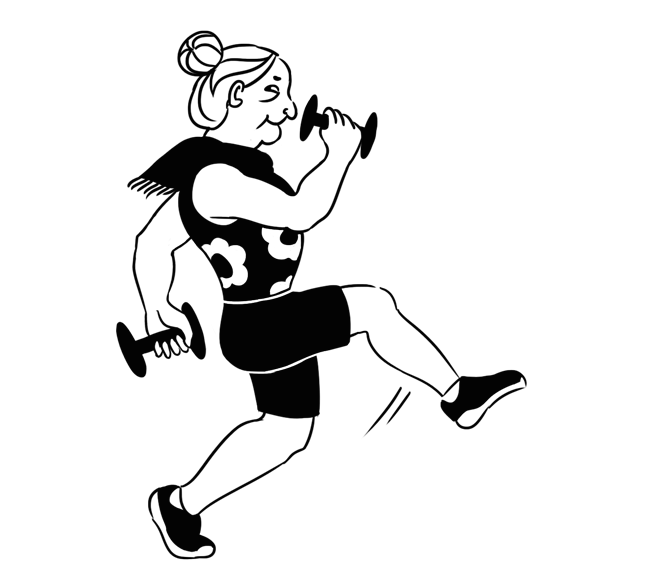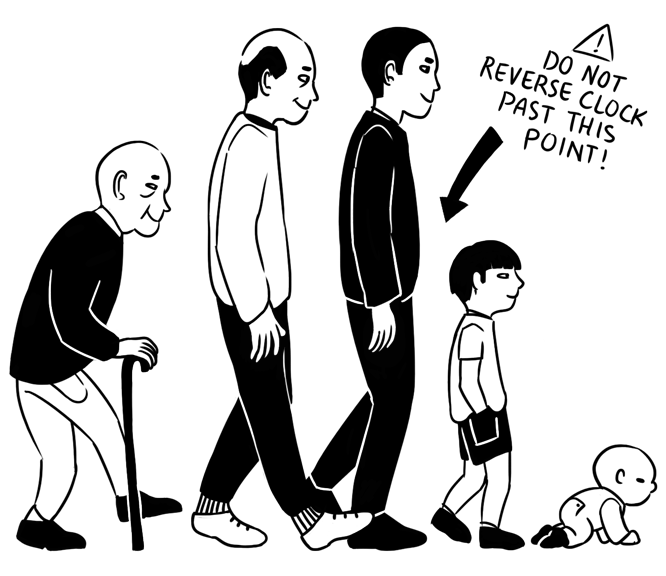Getting old is not for sissies. The choice is stark: Follow the procedures on this blog, and in the forthcoming book, which will slow it down as much as possible, or do nothing and endure its inflictions. One choice means a lot of work, and the other a lot of pain and suffering. Not so easy to put a pretty spin on “The Golden Years.”
There are many theories of aging. As far as Quantitative Medicine is concerned, there are two principal components:
- Mitochondrial damage. Mitochondria reproduce every three weeks or so. Damage to DNA could be replicated. Though the body has numerous defenses against this, the damage slowly accumulates.
- Stem cell damage. Stem cells replicate. Although the stem cells are somewhat hidden out of harm’s way, there is some damage, and this too accumulates.
Retard Aging by Protecting Stem Cells and Mitochondria.
If cells that are periodically replaced are to remain “youthful”, the stem cells that produce them, and the mitochondria that power the operation, need to stay as healthy as possible. Of course, these are interrelated. The four most damaging situations are:
| ABOUT YOUR STEM CELLS…..Cells do not replace themselves by directly dividing. This would simply replace old, worn-out cells by old, worn-out duplicates. Instead the body maintain a store of fresh health stem-cells (sometimes called progenitor cells) that can create new healthy cells. The stem cells for the skin live well below the surface of the skin where they are protected. They produce new skin cells which a then pushed toward the surface. The intestines, which are replaced every four days, have stem cells tucked safely away in “crypts,” well away form the caustic and unpredictable intestinal contents. Stem and progenitor cells usually can produce several types of cells. |
- High iron
- Sedentary lifestyle
- Adult onset diabetes
- High cortisol
The first one, high iron, could be hereditary, could occur with the onset of menopause, or could occur as a result of various dietary choices. The excess iron is toxic to the cells, and, if untreated, will greatly accelerate aging. The blood marker for this is ferritin. The treatment is periodic bloodletting.
The other three causes are quite familiar to us by now. And once again, the QM “pill” cures them! Interestingly, though, to seriously slow down aging, all three significant lifestyle components, diet, meditation, and exercise, are necessary.
It may be a bit of a surprise that a sedentary lifestyle accelerates aging. A principle to bear in mind is that busy cells are healthy cells. If a cell is being challenged, its mitochondria complete their energy production cycles, nutrients are consumed, and all is well. If the cell is idle, the mitochondria are inactive. They will skid to a halt partway through their energy production cycles. If they are in this state very long, they tend to kill themselves, and loose certain oxidizing radicals into the cell. This frequently kills the cell as well. This is a simple catabolic response. The body is removing unnecessary cells.
| ABOUT YOUR MITOCHONDRIA…Inside every cells are tiny bacteria-like creature called mitochondria. There are hundred of them, a veritable infestation, but a very healthy one. These mitochondria take in the food you ate, and convert it to ATP, the universal life energy. They are bacteria-like because they originally were. They were captured by us, or rather our ancient single-celled ancestrs, perhaps a billion years ago. Like all good bacteria, they reproduce by division. But how many are resident, and how often they divide is controlled by the host cell. They are replaced about every three or four weeks. |
However, this process is not entirely clean. The oxidizing radicals might damage the host cell, but not kill it. The mitochondria might reproduce, though damaged. Now we don’t fall apart if we don’t exercise, so it goes almost without saying that the body has numerous mechanisms to block the damaged cells and mitochondria from reproducing. But some damaged ones will reproduce. Odd, isn’t it, that a lot of cellular turnover translates to slower aging? But that is how we are designed.
Suppose all the cells are stressed for some other cause. An environment of hormonal or biochemical imbalance would cause this. The two most common causes of chronic imbalance in our society are chronic stress and adult onset diabetes (AODM). Chronic stress causes chronically high cortisol. High cortisol boosts insulin and glucose levels, shuts down the immune system, curtails anabolic cell renewal activity, and interferes with sleep. This alone would be a good launch into AODM, and frequently is.
Adult onset diabetes stresses every cell and all their mitochondria. AODM is frequently accompanied by a sedentary lifestyle, which compounds the problems. Given the widespread damage that AODM causes, and the numerous diseases it triggers, it should come as no surprise that the list includes accelerated aging. The cells are overloaded with nutrients and underutilized. This is, of course, a very unhealthy environment, and cellular damage would be an expected consequence.
So again, QM to the rescue. Get the numbers straight. Remove chronic stress, reverse AODM, exercise, and the cells will run clean again. Aging slows.
The Telomere Theory of Aging
This theory is as widespread as it is false, but we suppose it has certain philosophical implications (also false) that keep it going. Here’s how it works: When we evolved from bacteria with their circular DNA into eukaryotes with DNA strings, we needed a way to mark and protect the ends. This is the job of telomeres. A telomere is a specific sequence of nucleotides and it is repeated, typically 100 times, rather like wrapping a thread around the end of a rope to keep it from fraying. This part is true.
When a cell divides it loses a telomere. 99, 98, 97, …. 1, 0, done. So in this theory, lifespan is programmed. However, if you look one level deeper, it falls apart. The intestine replaces itself every four days. By the telomere theory, we would run out of replicable cells in about 400 days. Obviously this doesn’t happen, and it turns out that there is cellular gadgetry that will fashion new telomeres and tack them on. This process occurs where it needs to. We are never going to run out of telomeres for the cells that need them. That’s pretty much the end of the Telomere Theory of Aging.
However, telomeres do throw a nice monkey wrench into cancer promotion. As a cancer cell replicates, it also loses a telomere. It would run out unless it could also replace the telomeres, so this is another barrier. Not an insurmountable one obviously, but cancer cells are defective, so some can’t pull off the new telomere construction bit. The more ways cancer cells can run aground, the better off we are.
Bats
An extreme example of retarded aging is the bat. North American bug-eating bats weigh less than a mouse, but outlive it tenfold. The principle reason appears to be that bats have great mitochondria. Or is it that they have a lot of them? Likely both. Flying has such a high metabolic demand that any animal able to do it has to have a huge amount of mitochondria. Bats live 25 years. So do hummingbirds. Some of the larger birds outlive us. These animals do not seem to age. Of course, there are no retirement homes for flying animals (with the possible exception of parrots). When birds and bats can no longer fly, their life is over. So everything has to work in this high-energy mode until the end. That their life should be so greatly extended over their landlubbing cousins attests to the power of busy, healthy mitochondria and the consequent cellular health.
How We Can Be Like Bats, At Least As Far As Aging is Concerned
We can’t fly, but we can make the choices that will likely get us to 95 or beyond in one piece. Bats have no monopoly on that. Get the blood marker numbers in the right place and it all happens. Of course, the changes that must be made, the exercising, and all the rest can seem quite daunting. There are no shortcuts, no fountain of youth, no super-statin pills, but the ability to lead this life and reap the benefits is built-into all of us.


